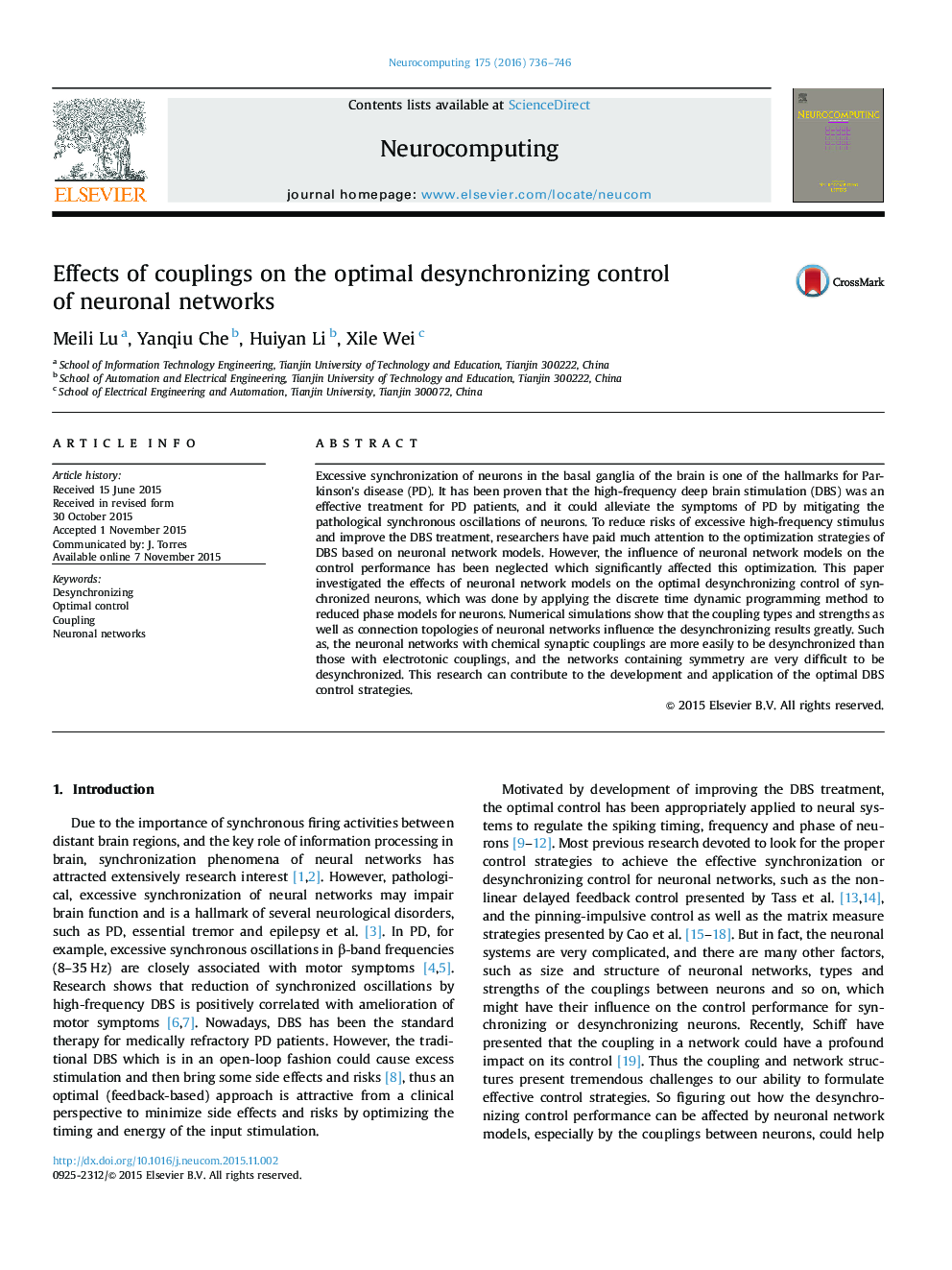| Article ID | Journal | Published Year | Pages | File Type |
|---|---|---|---|---|
| 407204 | Neurocomputing | 2016 | 11 Pages |
Excessive synchronization of neurons in the basal ganglia of the brain is one of the hallmarks for Parkinson׳s disease (PD). It has been proven that the high-frequency deep brain stimulation (DBS) was an effective treatment for PD patients, and it could alleviate the symptoms of PD by mitigating the pathological synchronous oscillations of neurons. To reduce risks of excessive high-frequency stimulus and improve the DBS treatment, researchers have paid much attention to the optimization strategies of DBS based on neuronal network models. However, the influence of neuronal network models on the control performance has been neglected which significantly affected this optimization. This paper investigated the effects of neuronal network models on the optimal desynchronizing control of synchronized neurons, which was done by applying the discrete time dynamic programming method to reduced phase models for neurons. Numerical simulations show that the coupling types and strengths as well as connection topologies of neuronal networks influence the desynchronizing results greatly. Such as, the neuronal networks with chemical synaptic couplings are more easily to be desynchronized than those with electrotonic couplings, and the networks containing symmetry are very difficult to be desynchronized. This research can contribute to the development and application of the optimal DBS control strategies.
